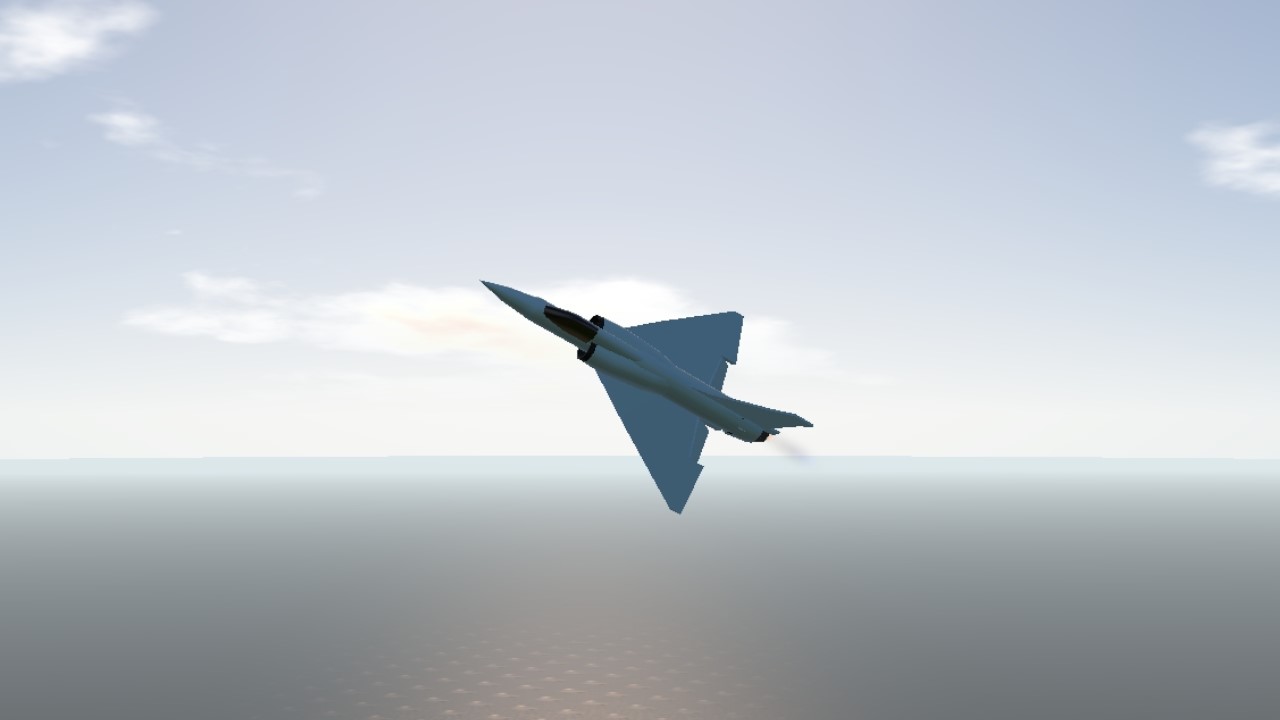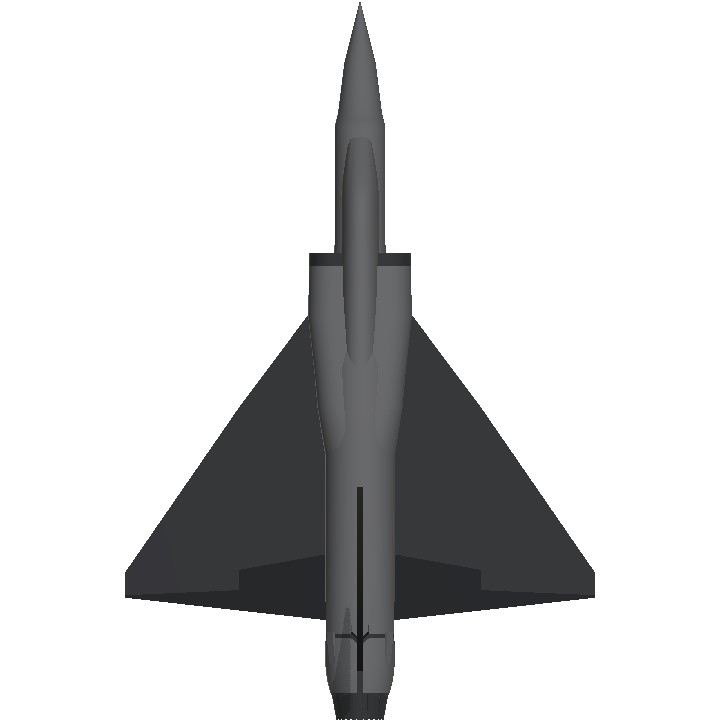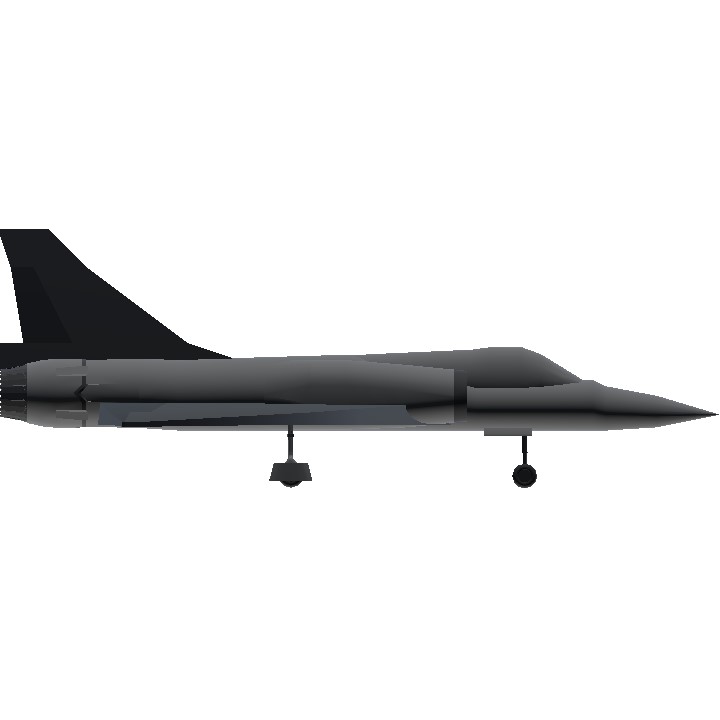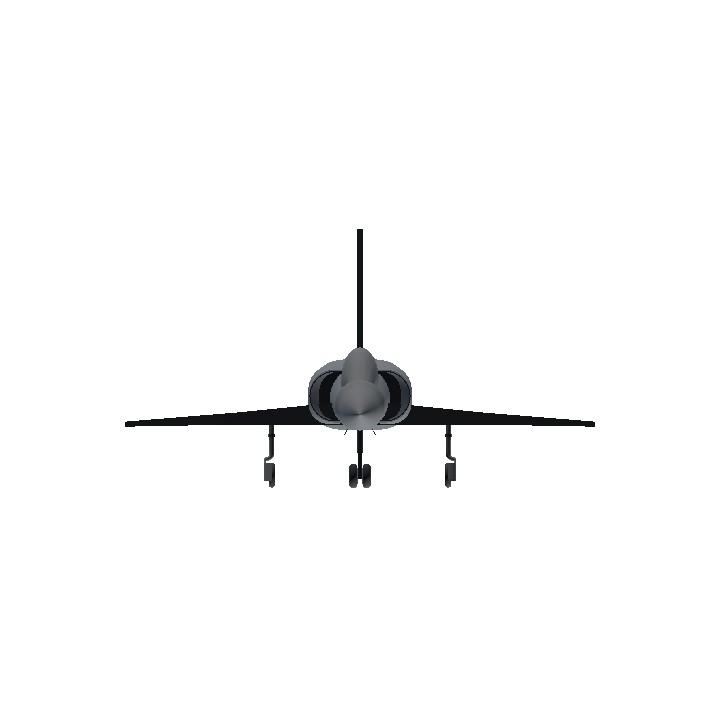History
Previous projects
The origins of the Mirage 2000 could be traced back to 1965, when France and Britain agreed to develop the "Anglo-French Variable Geometry" (AFVG) swing-wing aircraft. Two years later, France withdrew from the project on grounds of costs, after which Britain would collaborate with West Germany and Italy to ultimately produce the Panavia Tornado. Dassault instead focused on its own variable-geometry aircraft, the Dassault Mirage G experimental prototype. The design was expected to materialise in the Mirage G8, which would serve as the replacement for the popular Mirage III in French Air Force service.
The Mirage 2000 started out as a secondary project tentatively named "Delta 1000" in 1972. Dassault was devoting considerable attention to the Mirage G8A, a fixed-geometry derivative of the Mirage G8 that served as the competitor to the Panavia Tornado. The Mirage G8, which was envisioned as the "Avion de Combat Futur" (ACF or Future Combat Aircraft) of the French Air Force (Armee de l'Air, AdA), did not align with the service's conception of its future aircraft. The AdA wanted a Mach 3 fighter, not an interdictor aircraft incapable of dogfighting that was the Mirage G8. As such, Dassault redesigned the Mirage G8 into the two-engine Super Mirage G8A that would prove to be ambitious and expensive, being two and a half times the price of the Mirage F1 and over-engineered, especially compared to the F-16 that had just won orders from a number of European countries. Consequently, during a meeting of the National Defence Council on 18 December 1975, the Super Mirage was cancelled.
The ACF was a strike aircraft first and an interceptor second, while the Delta 2000 was the reverse, but the single-engine Delta 2000 was much more affordable. At the same National Defence Council meeting, a redesignated Mirage 2000 was offered to the AdA, and three prototypes were ordered. The AdA in March 1976 issued a set of official requirements whose parameters matched those of Dassault's performance estimates of the new fighter. The aircraft's primary role was interception with a secondary ground-attack capability; the AdA had a commitment for 200 aircraft. The first aircraft was to be delivered in 1982. This was a return to the first-generation Mirages, but with several important innovations that tried to solve their shortcomings.
Production
The production of the Mirage 2000 involved three construction sites, two of which located in Bordeaux, that specialised in different components. The wings were built at Martignas, and the fuselages were fabricated at Argenteuil (NW of Paris), with final assembly taking place at Bordeaux-Merignac. The first prototype, Mirage 2000 No. 01, though, was hand built at St Cloud, before being moved to Dassault's Istres facility for assembly. At the hands of Jean Coureau, No. 01 made its first flight on 10 March 1978, a mere 27 months after the programme go-ahead. During the 65-minute flight, Coureau took the aircraft to Mach 1.02 without afterburner, before climbing to more than 12,000 m and accelerating the aircraft to Mach 1.3.By the end of May, the aircraft had surpassed Mach 2 and an indicated airspeed of 1,200 kilometres per hour (650 kn). On the other end of the speed spectrum, the Mirage 2000 proved to be a capable low-speed aircraft, as demonstrated at the Farnborough Airshow in September 1978, during which Dassault pilot Guy Mitaux-Maurourd raised the aircraft's nose to 25° angle of attack (AoA) as the aircraft slowed to 190 km/h (100 kn). Later tests showed that the aircraft could attain 30° AoA while carrying fuel tanks and weapons.
The second prototype, No. 02, made its 50-minute first flight in September 1978 at the controls of Maurourd. The aircraft was to test some of the avionics systems and the carriage of weapons. Due to a flame-out while on a landing approach, the aircraft was lost in May 1984. No. 03 made its first flight in April 1979; equipped with a complete weapons system, it was used for radar and weapons trials. After 400 hours of flight, they were sent to Centre d'Essais en Vol, flight tests centre. Although three prototypes were ordered in December 1975, Dassault constructed an additional fourth single-seat demonstrator for its own purposes, which embodied lessons on the earlier aircraft, namely the reduction in fin height and an increased fin sweep, redesigned air inlets, and an FBW system. The only dual-seat Mirage 2000B of the test programme first flew on 11 October 1980.
The first production Mirage 2000C (C for chasseur, "fighter") flew on 20 November 1982. Deliveries to the AdA began in 1983. The first 37 Mirage 2000Cs delivered were fitted with the Thomson-CSF Radar Doppler Multifunction (RDM), and were powered by the SNECMA M53-5 turbofan engine. The 38th Mirage 2000C had an upgraded SNECMA M53-P2 turbofan engine. The Radar Doppler à Impulsion (RDI) built by Thales for the Mirage 2000C entered service in 1987. It has a much improved range of about 150 km, and is linked to Matra Super 530D missiles, which are much improved compared to the older Super 530F. Look-down/shoot-down capabilities are much improved, as well, but this radar is not usually used for air-to-surface roles.
Further development
The Mirage 2000N is a dedicated nuclear-strike variant, which was intended to carry the Air-Sol Moyenne Portée (ASMP) nuclear stand-off missile. Flight tests of the first of two prototypes, Mirage 2000N 01 (the eighth Mirage 2000) began on 3 February 1983. During the 65-minute flight, the aircraft reached a speed of Mach 1.5. The variant entered operational service in 1988, initially operating from Luxeuil Air Base with the 4e Escadre de Chasse. Closely derived from the Mirage 2000N is a dedicated conventional attack variant designated Mirage 2000D. Initial flight of the Mirage 2000D prototype, a modified Mirage 2000N prototype, was on 19 February 1991. The first flight of a production aircraft occurred 31 March 1993, and service introduction followed in April 1995. Seventy-five and eighty-six Mirage 2000Ns and Mirage 2000Ds were manufactured, respectively.
By the late 1980s, the Mirage 2000 was beginning to age compared with the latest models of F-16 fighters. In particular, attention was drawn to the aircraft's inability to engage multiple targets simultaneously, and the small load of air-to-air missiles it could carry. Consequently, Dassault in April 1989 announced that with the cooperation of Thomson-CSF, it would be working on a privately funded update of the Mirage 2000C, which was to be named the Mirage 2000-5. A two-seat Mirage 2000B prototype was extensively modified as the first Mirage 2000-5 prototype, and it first flew on 24 October 1990. A Mirage 2000C prototype was also reworked to a similar standard, making its initial flight on 27 April 1991. The first front-line aircraft variant to have been designed specifically in response to the export market, Taiwan was the first country to order the type in 1992, followed by Qatar in 1994. The type was first delivered in 1996 and entered service in 1997.
Domestically, Dassault needed an order from the AdA to help promote foreign sales, and in 1993, the AdA decided to upgrade 37 of their existing Mirage 2000s to the 2000-5 specification as a stopgap before the arrival of the Rafale in AdA service. The upgraded aircraft were redesignated Mirage 2000-5F, and became operational in 2000. They retained the old countermeasures system with the Serval/Sabre/Spirale units and did not receive the ICMS 2 system. A two-seat version was developed, as well, whose rear seat has a heads-up display, but not an associated head-level display, and lacks a built-in cannon, although cannon pods can be carried.
At the urging of the United Arab Emirates, Dassault worked on a further modification of the Mirage 2000-5. Initially dubbed Mirage 2000-9, this variant had the upgrade of the radar and the associated avionics, the change of weapons configuration, and the extension of range.
The last Mirage 2000 was delivered on 23 November 2007 to the Hellenic Air Force; afterwards, the production line was shut down.
Normal Flight Control
Galery





Specifications
General Characteristics
- Predecessor 30 part challenge
- Created On Android
- Wingspan 30.1ft (9.2m)
- Length 46.6ft (14.2m)
- Height 16.7ft (5.1m)
- Empty Weight 11,877lbs (5,387kg)
- Loaded Weight 13,163lbs (5,970kg)
Performance
- Power/Weight Ratio 2.56
- Wing Loading 29.0lbs/ft2 (141.5kg/m2)
- Wing Area 454.1ft2 (42.2m2)
- Drag Points 3157
Parts
- Number of Parts 30
- Control Surfaces 5
- Performance Cost 274






